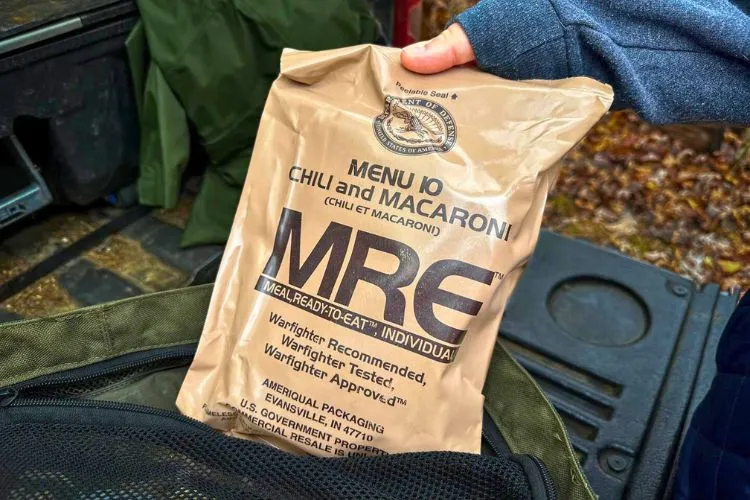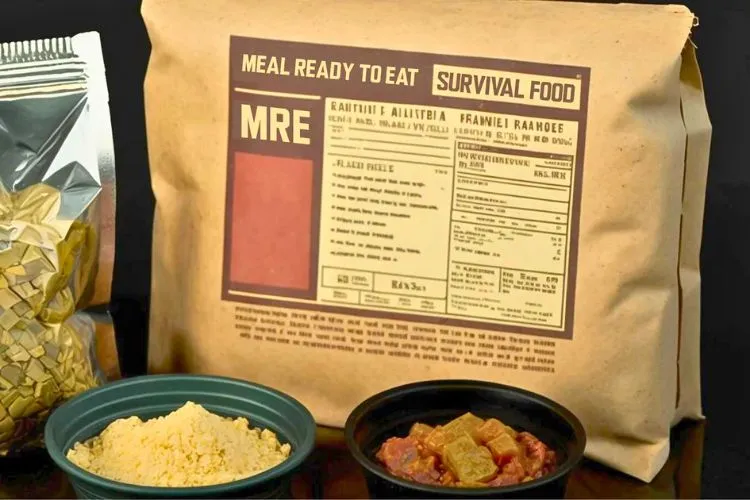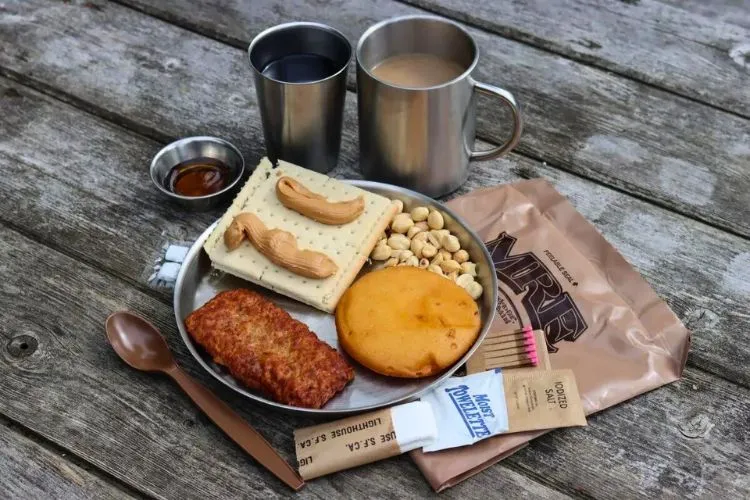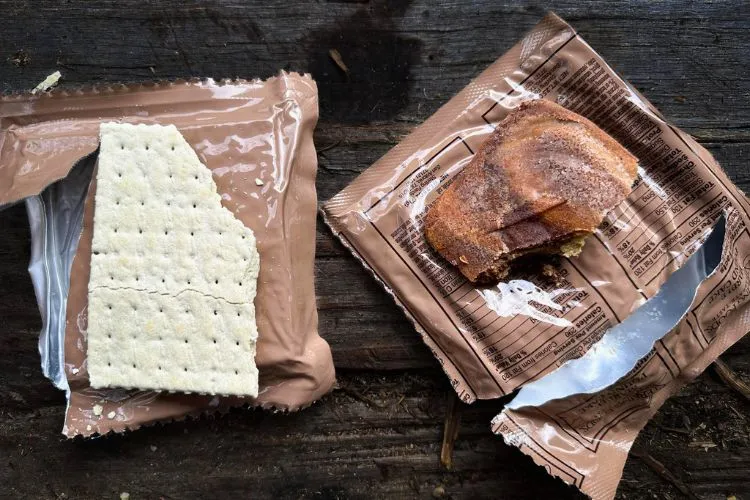Ever since their introduction to the U.S Armed Forces in the 1980s, Meals, Ready-to-Eat (MREs) have steadily found their way from military operations to the backpacks of outdoor adventurers to the cupboards of survivalists.
Recognized for their convenience, portability, and hearty nutritional content, MREs have proved indispensable in many situations.
But, do you know how long are MREs good for?
Well, for those who rely on these meals, the key is not just understanding what they are, but knowing their shelf life and how best to store them.

How Long Are Mres Good For? Understanding The Shelf Life
Shelf life refers to the period during which an item remains usable without degrading in quality. In the case of MREs, the manufacturer often indicates this timeframe. However, it’s critical to note that this is a conservative estimate based on an average storage temperature of approximately 60º F.
Typically, MREs can last anywhere from three to five years, depending on storage conditions. However, MREs stored in cooler environments can exceed this range, with some reports suggesting a wholesome consumption period of up to a decade!
Remember – this is merely an average and not an all-encompassing rule.
Crucial Factors Affecting MRE Shelf Life
The surrounding temperature is crucial to an MRE’s shelf life. Each MRE contains a time-temperature indicator, a small, round sensor that changes color based on the package’s exposure to heat over some time.
At higher average temperatures, MREs degrade more quickly, reducing their shelf life significantly. Ideal storage temperatures are typically around 60-70º F.

The Role of Packaging
When talking about the shelf life of MREs, packaging also plays an essential role. Most MREs are vacuum-sealed in robust, puncture-resistant packages that protect the meal from exposure to air, moisture, or pests.
Proper care for the packaging – preventing tears, punctures, or compromising seals – can significantly lend itself to extending an MRE’s shelf life.
Optimal Storage Conditions
Best practices for storing MREs involve maintaining lower temperatures, as previously mentioned. However, other factors to consider include dry conditions and away from direct sunlight.
Storing MREs in a cool, dark basement, for example, can extend their shelf life compared to storing them in a hot garage. Always ensure you’re keeping MREs off the floor and away from sharp objects to protect the integrity of the packaging.
Recognizing Signs of MRE Spoilage
Knowing when an MRE has gone bad is critical for safety. Despite the long shelf life, MREs are not immune to spoilage under inappropriate conditions. Visible signs such as bloating in the packaging or damaged seals indicate that the contents inside may have spoiled.

Olfactory cues are another active way of detecting spoilage. Unpleasant or ‘off’ smells emanating from an opened MRE are clear signs that the food may no longer be safe to consume. In doubt, remember – it is always safer to discard questionable MREs than risk foodborne illnesses.
Storage Tips And Techniques
While we’ve discussed temperature and storage conditions, maximizing MRE shelf life also involves a strategic approach. For instance, a heat-stressed MRE may have compromised nutrition content, but it’s not necessarily inedible. These MREs are ideal for using in less-intensive activities, saving your top-notch MREs for emergency scenarios.
Clicking and hissing sounds from the heating element signal that it’s time to discard the MRE. There’s no harm in sampling a small bite from a suspected bad MRE; it often helps determine its quality, going beyond mere ‘best-by dates’.
Safe Storage Practices for MREs: Ensuring Longevity and Quality
Meals, Ready-to-Eat (MREs) are designed for durability and convenience, catering not just to the military but also to campers, hikers, and emergency preppers.
Their robust packaging is specifically engineered to withstand tough conditions, yet it’s imperative to follow specific storage practices to ensure they maintain their integrity over time. Proper storage extends the shelf life of MREs and guarantees they’ll be ready and safe when you need them most.

The Importance of Dark Places
Light exposure, particularly sunlight, can significantly degrade the quality of food products, including MREs. UV rays can break down the chemical bonds in food, altering its nutritional content, flavor, and safety.
Therefore, storing MREs in dark places is crucial. An ideal storage location would be a pantry, closet, or cupboard away from direct sunlight, where conditions are stable and conducive to long-term storage.
Temperature Control
As previously mentioned, temperature control is vital in extending the shelf life of MREs. High temperatures accelerate the degradation of food products, affecting taste, texture, and safety. The ideal temperature range for storing MREs is between 50°F and 70°F (10°C to 21°C).
Basements often provide a cool environment perfect for storage, but ensure that it’s not prone to flooding or excessive humidity, which could undermine the storage conditions.
Avoid Crushing or Puncturing the Packaging
The vacuum-sealed packaging of MREs protects the food from air, moisture, and contaminants. Any breach in the packaging can lead to spoilage and foodborne illnesses.
When storing MREs, ensure they are not under heavy objects that could crush or puncture the packaging. Similarly, avoid sharp edges or corners which may compromise the seal.
Preventing Moisture Exposure
Moisture is an enemy of long-term food storage. It can lead to mold growth and spoilage. Ensure that your storage area is dry.
If you’re storing MREs in a place prone to dampness or humidity, consider using dehumidifiers or silica gel packets to absorb excess moisture. Additionally, placing MREs on shelving, as opposed to directly on basement floors, can prevent accidental water damage.
Rotation and Organization
For those storing a significant number of MREs, rotating your stock is wise to ensure older meals are used first, keeping your supply fresh.
Organize your MREs by date of packaging or expiration, and clearly mark the boxes or shelving to ease rotation practices. This method ensures that MREs are consumed within their optimal shelf life periods.
Checking for Signs of Damage
Periodically inspect your stored MREs for any signs of damage or spoilage. Look for any bloating, punctures, or tears in the packaging. An intact seal doesn’t guarantee freshness if the packaging has been compromised. Smelling the contents upon opening can also help identify any spoilage, as off odors indicate it’s time to discard the pack.
Frequently Asked Questions (fAQs)
What is the longest time you can safely store an MRE?
As suggested before, under ideal storage conditions, MREs can be consumed up to a decade or possibly longer. However, always check for signs of spoilage before consuming older MREs.
How does the storage temperature impact MRE shelf life?
Heat significantly impacts MRE shelf life, reducing it at elevated temperatures. Therefore, a cooler environment is much more conducive to long-lasting MREs.
Can you eat MREs past their expiration date?
The ‘expiration dates’ on MREs are often ‘best-by dates’. It’s safe to eat these meals after the date, provided they reflect no signs of spoilage, and the heating element still functions properly.
What are the first signs that an MRE has spoiled?
Damaged seals, inflated packaging, off-putting smells, or abnormal colors/textures are typical signs that an MRE has spoiled. Exercise caution when encountering these symptoms.
Conclusion
MREs offer a convenient solution for nourishment in various scenarios, from outdoor adventures to emergency preparedness. Proper storage is key to maintaining their safety, nutrients, and taste over time.
By keeping MREs in cool, dark, dry places away from potential damaging factors and periodically checking their condition, you can ensure a reliable and safe meal ready whenever it’s needed. Remember, effective storage practices not only extend the life of MREs but also safeguard the well-being of those relying on them.


